Dawson's Foundry (Sturdevant's Garage)
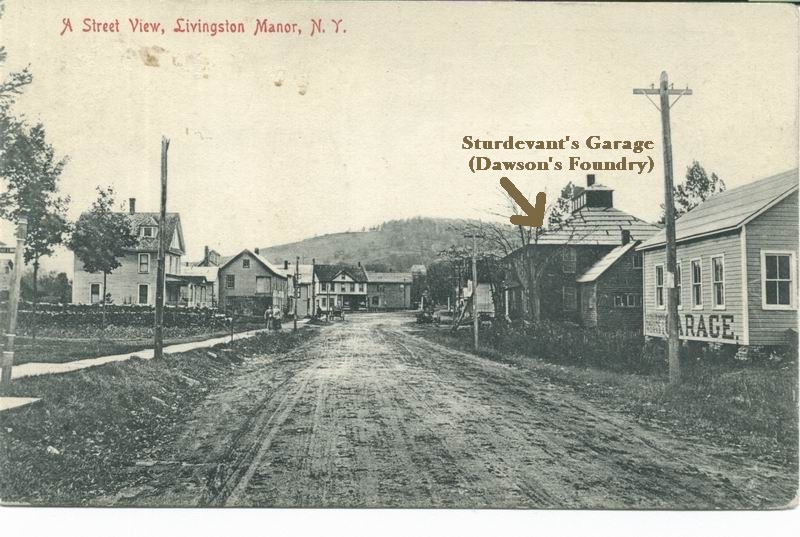
Looking down Main Street with Hoos' United Cigar store in the center. 1917
The building shown in the photograph as the Dawson Foundry is the
same building that would later be known as Sturdevant's Garage. Thomas
Dawson, with a partner named Atkins who was a lawyer in the Manor, built a
foundry on a Main Street location, across from Alonzo Ostrum's blacksmith
shop in 1898. This was not the structure shown in the photograph, and was
probably a smaller building. This endeavor became a success, receiving
numerous large orders from all over the area; window weights, railroad
brake shoes, pipe hangers, factory furnace grates, among other items that
kept his four workers casting as much as four days a week. It also served
as the first recycling center, buying up tons upon tons of old iron that
had accumulated at the existing acid factories, as well as those factories
at DeBruce and Emmonsville that moved to Pennsylvania.
Dawson's success meant that more space was needed. In 1903, he filled in
and raised his riverside lot over two and one half feet, and in 1904,
built a structure, 35 x 60 feet, which is the one shown in the photograph.
Now being able to do a larger volume of work with the new, larger working
quarters, casting was now done everyday.
The business prospered throughout that decade but by 1913, with fewer
orders and coming onto hard times, Dawson filed for bankruptcy. The
business sat idle for a short time until Eugene Bouton, attorney from
Livingston Manor, purchased the site and reopened it in 1914. The building
was now larger than was needed for the scaled down foundry operation, so
Bouton rented out a portion of it to Elmer and Harry Sturdevant for use as
a garage. By 1918, the garage was a more profitable venture than iron
work, so Harry Sturdevant rented the rest of the building, converting the
remaining space into his garage.
The building remained until 1963, when the Shandelee Lumber Company,
Albert Schleiermacher and the Temple Brothers, dismantled the old
structure and built a smaller service station, with gas pumps, on the same
lot.
Now the reason for the posting of the picture. Those who have visited our
town recently have probably noticed the beginnings of a new structure
being built on the foundry lot. To date, footings have been set, the
foundation poured, and filled back in with stone. During the excavation
for the footings, Ray Lewis, who was operating the excavator, came across
a concrete vault type building buried in the ground. Attached to this
underground structure was the remains of a chimney. Though the workers and
a few bystanders marveled at this buried treasure for a time, and guessed
at its purpose, work needed to be pressed on, and since it was too large
to be raised to the surface in one piece, it was broken up and carted
away.
Speculation of those who witnessed the unearthing of this concrete room
came to the conclusion that it housed the steam boiler for the garage.
Maybe so, but in knowing a little about the history of the site, I can't
help but wonder if it had served in some way for the operation of the
heating plant used for the first, smaller foundry, before the lot was
filled in by Dawson back in 1903.
The concrete structure was dug up in the area towards the front of the
lot, a few feet back from the sidewalk, and within twenty feet from the
neighboring restaurant building. The photograph's image of the foundry
shows a chimney, one of two, emanating from the roof in about the same
location.
fred Jan 27, 2006
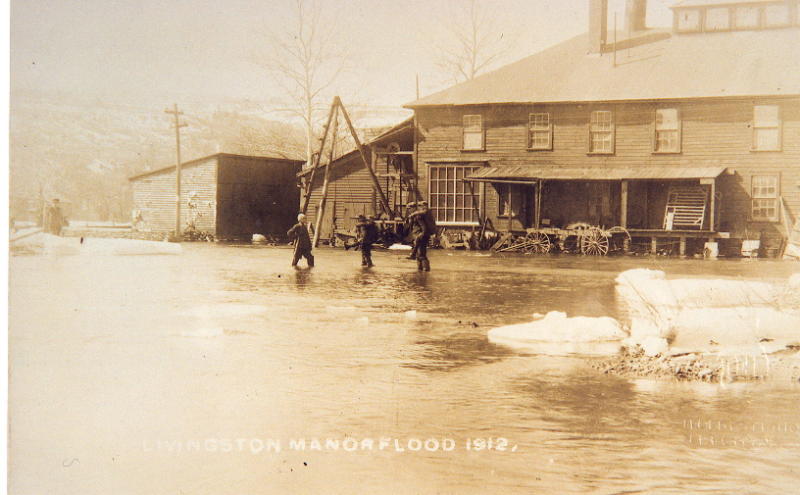
Flood of 1912 with Dawson's Foundry. Note the tripod in front
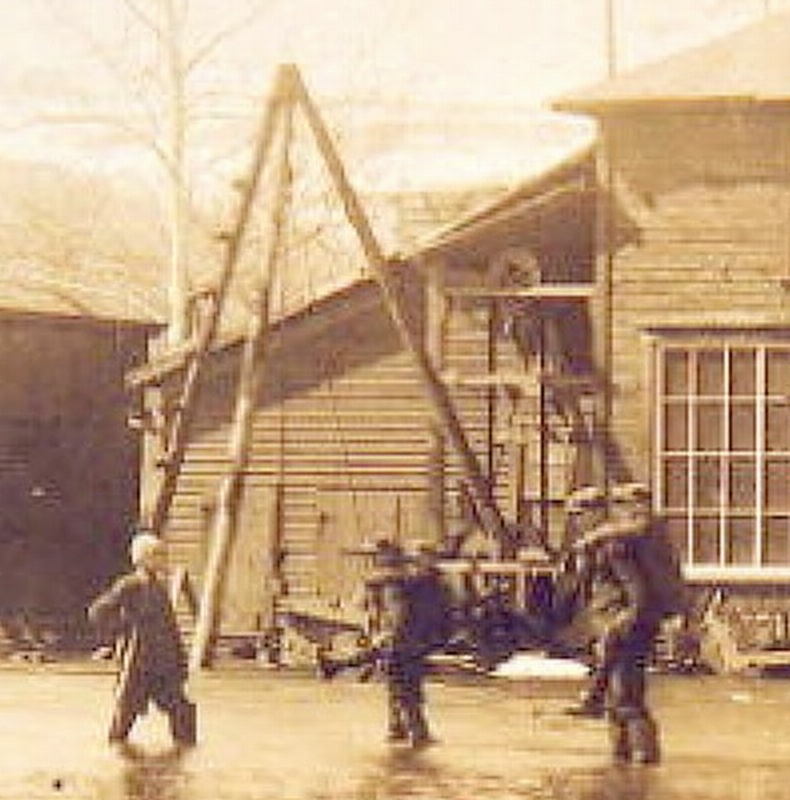
The tripod was used to unload scrap iron for the Foundry and to load
the new cast iron parts from the forge. Note the belt attached to the
building which might have been a power winch to load and unload heavy
objects from the wagons.
The rear pole is attached to the building and a pulley at the top with
a cable that would be attached to a drum turned by the belt. Many times a
car transmission and differential rear axel would be used as a power winch
that they could use the brakes to hold it and forward and reverse to raise
or lower.
I remember my Grandfather Van Aken had a "doodlebug" that he
would jack up and attach a rear wheel with no tire and use it as a winch
to move heavy loads. There was another wheel that he used for a pulley
drive for a buzz saw.
Anyone have more information since this was a guess?
Harold

It's only a guess but the first Fords were half-built at the garage
that sold them. Maybe they were in the process of assembling them
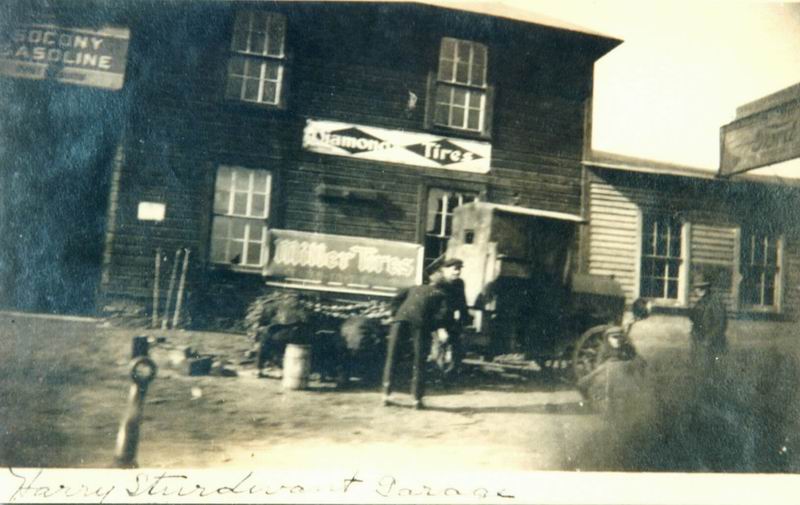
probably a little later
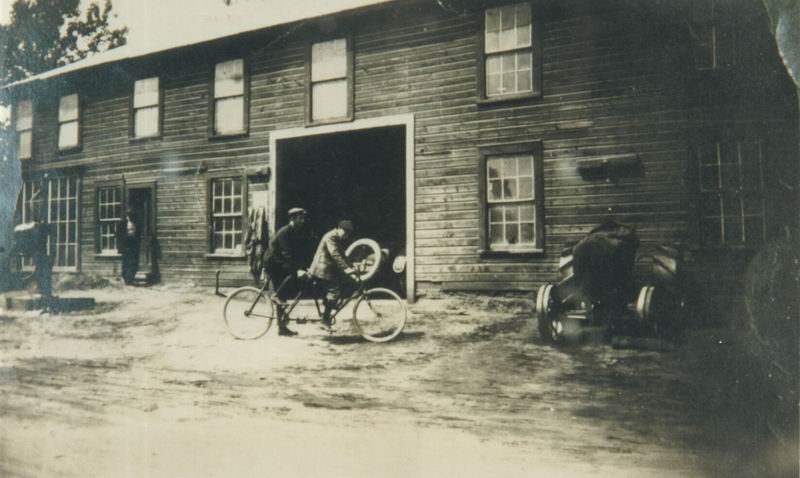
The signs are gone
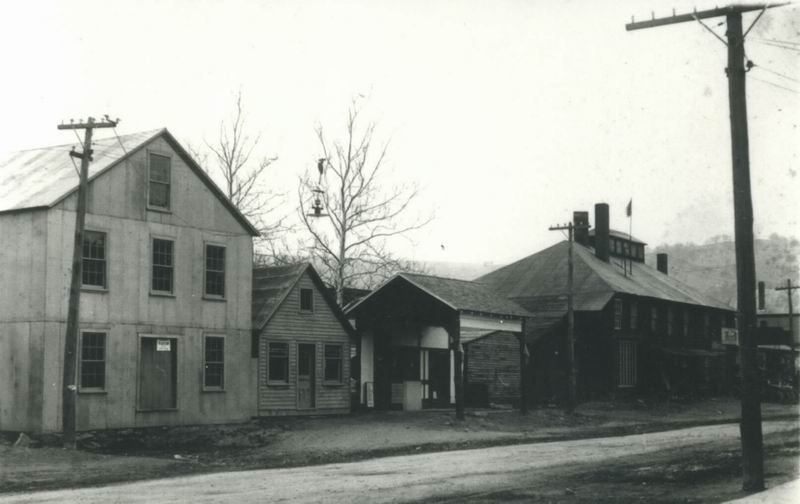
Note the little building in the middle - this was there when I was a
kid and had the Bounton Law Office in it and later a Taxi office. Art's
Blue Room was built on the site of the larger building to the left
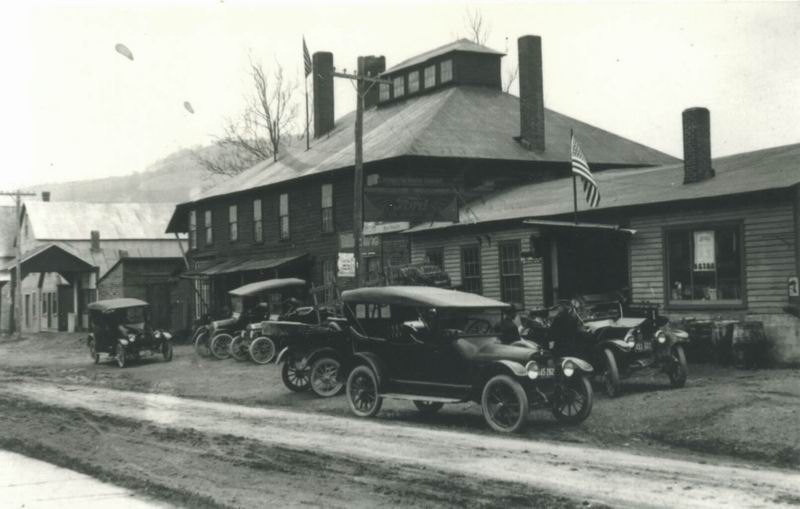
Based on the cars I would think this was in the 1920's
|







